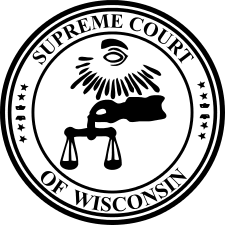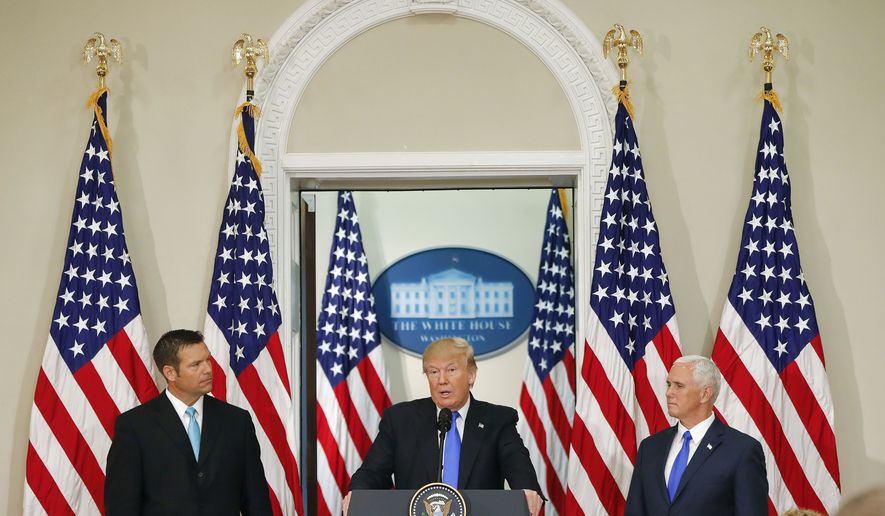Two weeks ago, the Wisconsin Supreme Court sent a shock wave through campaign finance watchers with its decision in Two Unnamed Petitioners v. Peterson. The decision terminated Wisconsin’s controversial, long-running “John Doe” investigation into allegedly illegal coordination between Governor Scott Walker and a large number of conservative organizations in the state, and set forth a legal standard for Wisconsin that is appropriately protective of political speech and activity. And this has “reformers” going bonkers.
The Court’s decision deals with a number of complex, controversial issues that have vexed both self-styled reformers and real-world political speakers and actors for, literally, decades. One can certainly argue that the court got it wrong – we would disagree – but the self-styled “reform” community’s immediate reaction was to launch a series of ad hominem attacks on the Court majority, and to downplay, if not deny, the existence of any meaningful points of dispute at all.
The Brennan Center for Justice and the Wisconsin Democracy Campaign were out within hours to claim that the majority justices had acted unethically and that the decision was, in the words of the latter, “corrupt.” Within two hours of the decision being released (84 pages for the majority opinion, 167 pages with concurrences, 237 with dissents, 480 pages with appendices), at 7:36 a.m. local time, Richard Hasen used his influential Election Law Blog to pronounce the judgment nothing more than “partisanship,” without even an effort to justify the accusation.
Not until this week, when the Campaign Legal Center’s Tara Malloy decided to take a whack at it, did we see anyone in the “reform” community publish a legal critique of the Court’s decision. Malloy concludes that the decision is “a joke.” But the real joke is Malloy’s analysis.
But before turning to Malloy’s critique, it is worthwhile to review the substantive legal issue at the heart of the Wisconsin case. And, as usual when the subject is campaign finance law, we have to start with Buckley v. Valeo.
The 1974 Amendments to the Federal Election Campaign Act purported to regulate and severely limit any expenditure “relative to a … candidate,” or, in another part of the statute, “for the purpose of influencing an election.” The Buckley Court held that to avoid concerns of unconstitutional vagueness and overbreadth, the term “expenditure” had to be narrowed to include only payments for communications that “in express terms advocate the election or defeat of a clearly identified candidate,” or to payments by political committees.
Even after narrowing the term, however, the Court still struck down limits on independent expenditures. The government claimed that limits on independent expenditures were “necessary to prevent would-be contributors from avoiding the contribution limitations [upheld elsewhere in the opinion] by the simple expedient of paying directly for media advertisements or for other portions of the candidate’s campaign activities.” The government argued that, “expenditures controlled by or coordinated with the candidate and his campaign might well have virtually the same value to the candidate as a contribution and would pose similar dangers of abuse.” The Court rejected this anti-circumvention rationale, noting that “such controlled or coordinated expenditures are treated as contributions rather than expenditures under the Act … [and] contribution ceilings rather than … independent expenditure limitation[s] prevent attempts to circumvent the Act through prearranged or coordinated expenditures amounting to disguised contributions.” And that’s it.
What Buckley did not address, then, is whether the term “expenditure” in “coordinated expenditure” should be limited, in the same way as it was elsewhere in the decision, to include only express advocacy, or whether it should be read more broadly to include any spending that is “coordinated.” And this was the question at the core of the dispute in Wisconsin.
The regulatory groups have long argued that the term “coordinated expenditure” must include all spending undertaken in “coordination.” Their argument is mainly a straightforward one of policy – if expenditure is limited to “express advocacy” (or some other narrow content standard), then contribution limits are easily avoided by making coordinated expenditures that fall short of express advocacy. And the Buckley Court recognized that such ads might be, in some cases, as valuable to a candidate as ads containing express advocacy.* From a statutory standpoint, they argue that, absent a specific Court ruling to the contrary, “expenditure” should be given its more normal, broad definition.
Free speech advocates argue that, as Buckley held, “expenditure” is overbroad, and “for the purpose of influencing,” is an inadequate narrowing definition that is unconstitutionally vague, as Buckley also held when evaluating other parts of the statute. Simply calling an expenditure “coordinated” doesn’t solve this vagueness problem. After all, political advocates are regularly in contact with members of the legislature who share their agenda, and may often discuss how to build public support for that agenda. Is a Sierra Club ad critical of President Bush’s authorization for oil drilling off the Florida coast “for the purpose of influencing an election”? Is an ad by Wisconsin Manufacturers and Commerce urging support for Governor Walker’s union reforms “for the purpose of influencing an election”? If that standard is too vague (and Buckley thought it was) for an independent expenditure, does it become less vague if the expenditure is “coordinated”? The answer seems pretty clearly to be “no.” Thus, speech advocates believe Buckley’s “express advocacy” limitation on “expenditure” does and should apply to defining “coordinated expenditure.” First, you need an “expenditure” (express advocacy). Then, you consider “coordination.”
Speech advocates note as well that it is very easy to file complaints alleging coordination, because almost anyone who spends in an election is also likely to meet from time to time with officials to discuss issues. And the ensuing investigations tend to be among the most intrusive in the campaign finance regime, since by definition the issue will usually turn on the content of private communications between officials and citizens who support their positions on issues. Speech advocates believe that if “expenditure” in “coordinated expenditure” is not narrowly construed, it will circumvent Buckley’s holding that independent expenditures cannot be limited, because almost anyone likely to make independent expenditures can be accused of making coordinated expenditures, triggering a costly investigation, such as that which took place in Wisconsin.
The Supreme Court has never addressed the scope of what coordinated communications can be considered “for the purpose of influencing an election,” but if it follows its reasoning elsewhere in Buckley, then it would appear some restrictive definition would be necessary. In any case, as the U.S. Court of Appeals for the Seventh Circuit has said, “there is a lively debate among judges and academic analysts” as to whether there is “constitutional protection for raising funds to engage in issue advocacy coordinated with a politician … .” O’Keefe v. Chisholm, 769 F.3d 936 (2014). But most regulatory enthusiasts simply refuse to recognize that the issue exists at all.
Malloy complains that the Wisconsin Court “decided a constitutional case about coordinated spending without analyzing – or even referencing – a single U.S. Supreme Court case about coordinated spending.” This is a) misleading, and b) factually untrue, even if it were not misleading.
This is misleading because there really aren’t U.S. Supreme Court cases relevant to the issue in this case. Malloy suggests two – Buckley, and McConnell v. FEC, the 2003 case upholding most of the McCain-Feingold law (but now overruled in part). Malloy does a little trickery with Buckley – she notes (correctly) that Buckley found “for the purpose of influencing” to “present[] fewer [vagueness] problems in connection with the definition of a contribution.” Then, with a little sleight of hand, she notes that Buckley recognized that the law treated a “coordinated expenditure” as a “contribution.” Therefore, she concludes that “the limiting gloss of express advocacy” is not necessary to avoid vagueness. That’s true of “contribution,” but not of “coordinated expenditure.” The Court did not discuss at all whether the limiting gloss on “expenditure” was necessary when defining “coordinated expenditure.” A “coordinated expenditure” is a contribution, true, but it is the definition of “coordinated expenditure,” not of “contribution,” that is at issue here.
It is helpful to look at the full passage of Buckley on which Malloy relies:
The use of the phrase [“for the purpose of influencing”] presents fewer problems in connection with the definition of a contribution because of the limiting connotation created by the general understanding of what constitutes a political contribution. Funds provided to a candidate or political party or campaign committee either directly or indirectly through an intermediary constitute a contribution. In addition, dollars given to another person or organization that are earmarked for political purposes are contributions under the Act.
But “coordinated expenditures” are not “funds provided to the candidate,” nor are they “dollars given to another person that are earmarked for political purposes.” They are, in fact, not funds given to another person. By definition, they are retained and then spent directly by the speaker. So they don’t have the “limiting connotation” that the Buckley court considered important in determining if “contribution” was unconstitutionally vague.
To put it another way, we know that a “coordinated expenditure” is treated as a contribution. What we don’t know is what constitutes a “coordinated expenditure.”
Similarly, McConnell doesn’t address the meaning of “coordinated expenditures.” The sentence Malloy cites – and it is, again, pretty much the extent of the Court’s analysis – is, “[]there is no reason why Congress may not treat coordinated disbursements for electioneering communications in the same way it treats all other coordinated expenditures.” OK.
“Electioneering communications,” however, were not any old communications, but a narrow category of communications – broadcast ads mentioning a candidate and run in the 60 days before an election. McConnell held that this definition was not unconstitutionally vague, and indeed vagueness is not its problem. But there are two big problems in relying on it as Malloy does.
First, McConnell tells us only that “electioneering communications” can be treated as “coordinated expenditures.” And of course, presumably “express advocacy” can be treated as a “coordinated expenditure” as well. But that doesn’t advance the ball much. We already knew about “express advocacy,” and “electioneering communications” add relatively little to that. What McConnell doesn’t address is what else can be treated as a “coordinated expenditure.” Can issue ads that are not “electioneering communications” or “express advocacy” be included? Because that is what we are presented with in Wisconsin. McConnell has nothing to say on the matter, because it wasn’t at issue in McConnell. Second, given that McConnell’s core holding that independent “electioneering communications” can be limited or banned was first substantially narrowed to “express advocacy or its equivalent” (FEC v. Wisconsin Right to Life) and later overruled (Citizens United v. FEC), a single cryptic sentence from a short paragraph dealing with a particular statutory provision not at issue in the present case seems a very thin reed on which to conclude that any “coordinated” speech amounts to a “coordinated expenditure” that can be treated as a “contribution.”
In sum, the Supreme Court clearly has held that coordinated expenditures may be limited – and not just in the two cases mentioned by Malloy. And the Wisconsin Supreme Court does not suggest otherwise. But SCOTUS has never addressed the question at issue in Wisconsin: What counts as a “coordinated expenditure”?
This ought to be enough to demonstrate that Malloy’s analysis proves nothing, but it is also worth noting that not only is Malloy’s critique misleading, it is flat out false. In fact, the Wisconsin Supreme Court’s decision cites both Buckley and McConnell. It just doesn’t cite the parts Malloy wants it to cite – which makes sense, given that those parts tells us very little about the issue involved. Rather, it quotes McConnell, within a cite to Wisconsin Right to Life, for the proposition that “the compelling governmental interest that justifies the regulation of express advocacy (the prevention of quid pro quo corruption) ‘might not apply to’ the regulation of issue advocacy.” And it cites Buckley repeatedly, not for the uncontested proposition that coordinated expenditures can be treated as contributions, but in analyzing the contested issue in the case: whether or not the definition of “expenditure” in “coordinated expenditure” must be limited in some way.
Malloy also claims that the Wisconsin Supreme Court was somehow incompetent for not discussing FEC v. Christian Coalition, a 1999 case out of the Federal District Court for the District of Columbia. In that case, the District Court rejected the claim that a “coordinated expenditure” had to meet the express advocacy definition of “expenditure,” for the same reason reformers didn’t want the Wisconsin Court to require express advocacy for an “expenditure” to count toward a “coordinated expenditure.” Again, it’s not a silly argument, even if there are countervailing arguments that were more persuasive to the Wisconsin court. But as Malloy concedes, agree or disagree with its analysis, Christian Coalition is not binding on the Wisconsin Court. Moreover, because the Christian Coalition won on all the claims of coordinated communications on the basic grounds that it didn’t coordinate, it had no incentive to appeal the Court’s ruling on the standard. So the opinion is of little value here.
From that analysis, Malloy concludes that the Wisconsin Supreme Court, “whether out of ignorance, willful blindness, or political expediency – close[d] its eyes to a whole body of controlling case law to reach the result it wants. Well, no. Rather, it considered a whole body of case law that Malloy ignores, and accordingly reached a result that Malloy doesn’t want.
In fact, it is Malloy and Campaign Legal Center (CLC) that simply cannot fathom, let alone grapple with, the claims of the plaintiffs in Two Unnamed Petitioners, and the notion that there could be anything problematic about regulating all communications as potentially “coordinated expenditures,” and hence, as “contributions.” The Wisconsin Supreme Court, however, recognized the dangers that an unrestrained definition of “coordinated expenditure” can have. In particular, it grasped, as did the Federal District Court for the Eastern District of Wisconsin before it, O’Keefe v. Schmitz, 19 F.Supp. 3d 861 (2014), rev’d on other grounds O’Keefe v. Chisholm, 769 F.3d 936 (7th Cir. 2014), and the lower court in the case at hand, that the standard promoted by the state, and by Malloy and CLC, was a dangerous one, an unconstitutionally vague one, and one that would deter a great deal of protected speech.
As the Wisconsin Supreme Court found:
“the special prosecutor sought, and received, wide-ranging subpoenas and search warrants for 29 organizations and individuals, seeking millions of documents that had been created over a period of several years…. Deputies seized business papers, computer equipment, phones, and other devices … . The special prosecutor obtained virtually every document possessed by the Unnamed Movants relating to every aspect of their lives, both personal and professional, over a five-year span (from 2009 to 2013). … As part of this dragnet, the special prosecutor also had seized wholly irrelevant information, such as retirement income statements, personal financial account information, personal letters, and family photos.”
Certainly this is likely to chill speech – and that’s before we get into the strong-arm SWAT tactics used to do the seizing, which will be the subject of another post.
It is unfortunate that self-styled “reformers” are unable to even come to grips with the issues involved in the Wisconsin investigation. One could almost say that makes their legal analysis “a joke,” but it’s not funny. And many suspect it is because, deep down, their goal is, in fact, to deter speech, and they recognize that unrestricted coordination investigations are a pretty good way to do it given that the Supreme Court has made clear that they can’t do it directly.
For the rest of us, we are fortunate that the Wisconsin Supreme Court saw differently, and we should hope that other courts will follow its lead.
*Note that some countries do use just this scheme, with limited contributions but no limits on coordination. Contribution limits still serve a function, because a straightforward bribe cannot be claimed as merely a campaign contribution, and the speech element of the “contribution” is retained – the spender has to spend the “contribution” on campaign speech.














